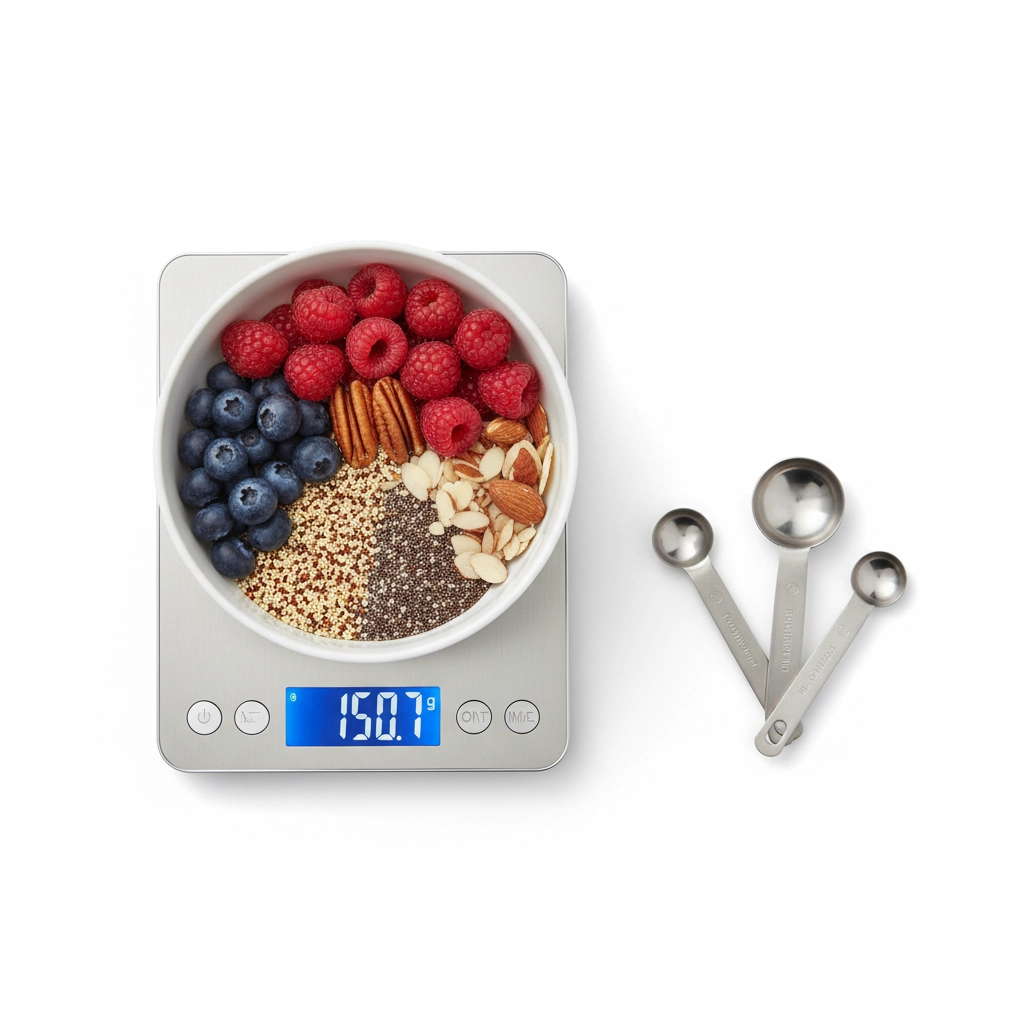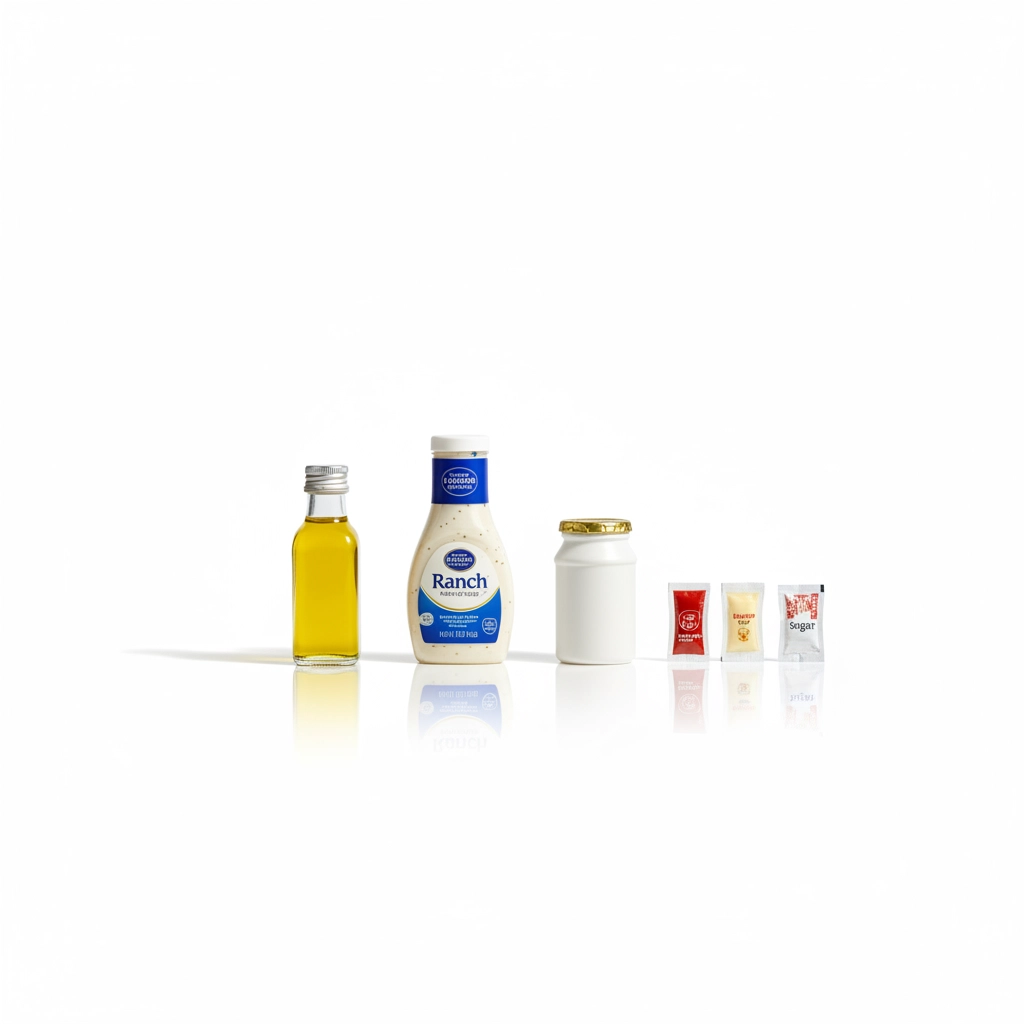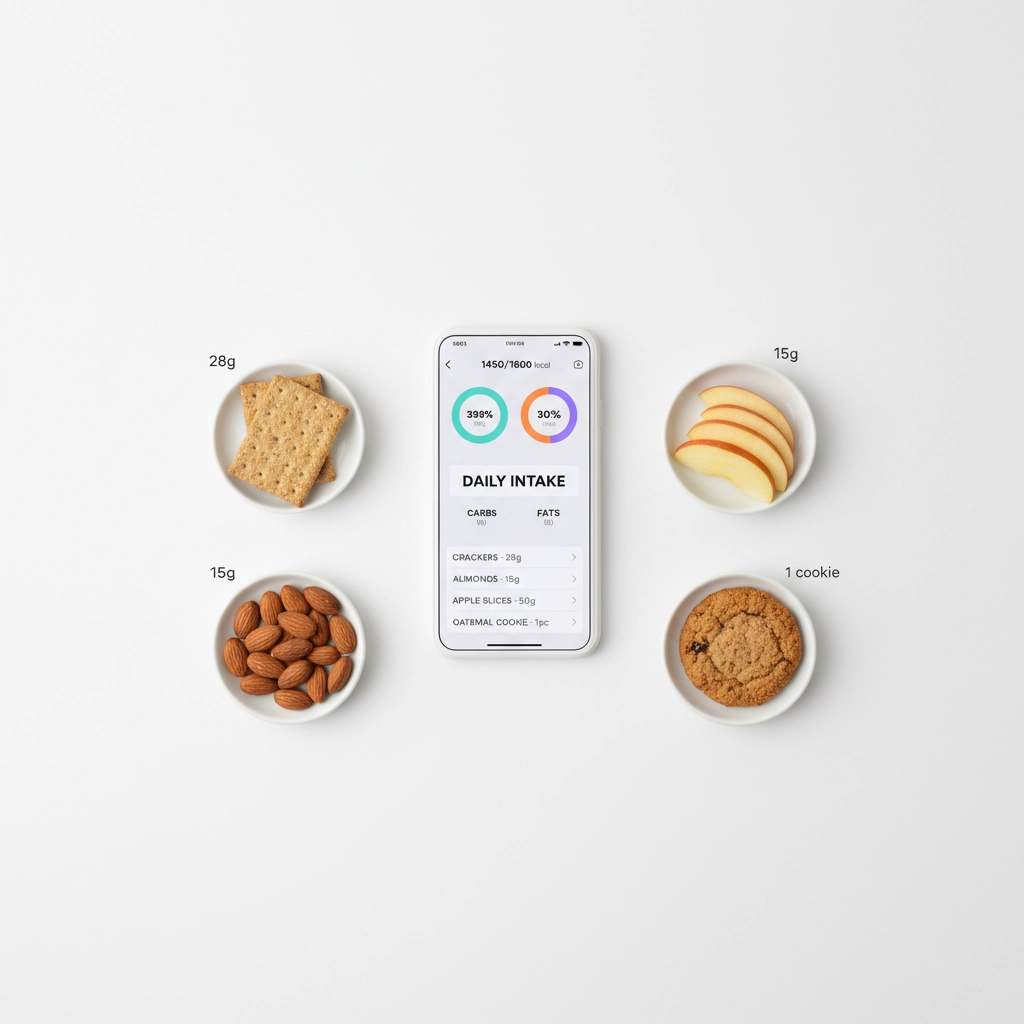Why Your Macro Tracking Isn't Working
You've committed to tracking your macros, downloaded the apps, and started logging your meals. But something's not adding up. Your results aren't matching your efforts, and you're wondering if macro tracking actually works.
Here's the truth: macro tracking absolutely works when done correctly. The problem isn't the method, it's the common mistakes that trip up even the most dedicated people. These errors can sabotage your progress and leave you frustrated, but the good news is they're all easy to fix once you know what to look for.
Let's dive into the three biggest macro tracking mistakes and show you exactly how to fix them fast.
Mistake #1: Guessing Your Portions Instead of Measuring
The Problem: You're eyeballing your food portions and hoping for the best. That "handful" of nuts becomes 200 calories instead of 160. Your "medium" apple is actually large. Your "tablespoon" of peanut butter is closer to two tablespoons.
This might seem like small stuff, but these little discrepancies add up fast. Research shows that even experienced dieters underestimate their calorie intake by up to 20%. When you're trying to hit specific macro targets, being off by 300-400 calories daily can completely derail your progress.
The Fix: Invest in a digital food scale and use it consistently. Yes, it feels tedious at first, but accuracy is everything when you're tracking macros.
Here's how to make portion measuring simple:
• Weigh everything in grams – it's more precise than ounces and easier to track in most apps
• Use the tare function – place your bowl on the scale, hit tare to zero it out, then add your food
• Measure liquids too – that splash of milk in your coffee counts
• Pre-portion snacks – measure out nuts, crackers, or dried fruit into containers so you can grab and go
After a few weeks of consistent measuring, your portion estimation skills will improve dramatically. You'll develop a better eye for what 4 ounces of chicken or 1 cup of rice actually looks like. But until then, trust the scale over your eyes.
Mistake #2: Ignoring Hidden Ingredients That Add Up
The Problem: You're meticulously tracking your main meals but completely forgetting about the "extras." The cooking oil you used to sauté your vegetables. The salad dressing on your greens. The cream in your coffee. The ketchup on your burger.
These seemingly innocent additions can easily add 200-500 calories to your daily intake without you realizing it. One tablespoon of olive oil packs 120 calories and 14 grams of fat. That "light" salad dressing? It's still 50-70 calories per serving.
The Fix: Track absolutely everything that goes into your mouth, no matter how small it seems.
Make it a habit to:
• Measure cooking oils and butter – even the amount you use to grease a pan counts
• Track all condiments and sauces – mustard, mayo, hot sauce, soy sauce, everything
• Log your beverages – that fancy coffee drink has macros too
• Account for gum, mints, and supplements – they might seem negligible but can add up
Pro tip: When dining out, ask for dressings and sauces on the side. This gives you control over how much you use and makes tracking much more accurate.
Mistake #3: Not Tracking Your Snacks and "Quick Bites"
The Problem: You're diligent about logging breakfast, lunch, and dinner, but those handful of crackers while making dinner? The few bites of your kid's mac and cheese? The sample at the grocery store? They don't seem worth tracking, so you skip them.
But here's what happens: these untracked "quick bites" can easily add 200-400 calories to your day. That's the difference between hitting your macro targets and overshooting them by 15-20%.
The Fix: Develop a "everything counts" mindset. If it goes in your mouth, it gets tracked.
Here's how to make snack tracking effortless:
• Log it immediately – don't wait until the end of the day when you'll forget half of what you ate
• Use voice notes – quickly record what you ate if you can't log it right away
• Pre-log planned snacks – if you know you'll want something later, add it to your tracker now
• Keep a running note – jot down quick bites on your phone throughout the day
The key is building the habit of conscious eating. When you have to track everything, you become more mindful of what you're putting in your mouth. This awareness alone often leads to better food choices.
The Real Solution: Make Tracking Effortless
The truth is, these mistakes happen because manual macro tracking is complicated and time-consuming. You're trying to juggle portion sizes, ingredient lists, and macro calculations while living your busy life.
What if there was a simpler way? What if you could get accurate macro tracking without the guesswork, the forgotten ingredients, or the complicated calculations?
That's exactly why we created the MacroSculpt Macro Calculator. This isn't just another generic macro calculator: it's designed specifically to eliminate the three mistakes we just covered.
How MacroSculpt Fixes These Problems
Accurate Portions Made Simple: Our calculator includes a comprehensive food database with precise measurements, so you don't have to guess. Simply select your food and portion size, and get accurate macro breakdowns instantly.
Hidden Ingredients Included: We've built in common cooking methods, condiments, and preparation styles so nothing gets missed. When you log "sautéed vegetables," the cooking oil is automatically factored in.
Complete Meal Tracking: Our system makes it easy to log everything throughout the day, with quick-add features for common snacks and "quick bites" so nothing falls through the cracks.
Your Next Steps
Macro tracking doesn't have to be overwhelming or inaccurate. With the right tools and approach, you can get precise results without the frustration.
Start by implementing these fixes today:
- Measure your portions accurately
- Track every ingredient and condiment
- Log all snacks and quick bites immediately
Then, make your life easier with the MacroSculpt Macro Calculator. It's designed to eliminate the guesswork and give you the accurate tracking you need to reach your goals.
Remember, the goal isn't perfection: it's progress. Every meal you track accurately gets you closer to understanding your body and achieving your fitness goals. Start today, and in just a few weeks, you'll see the difference that accurate macro tracking can make.



